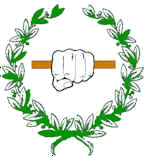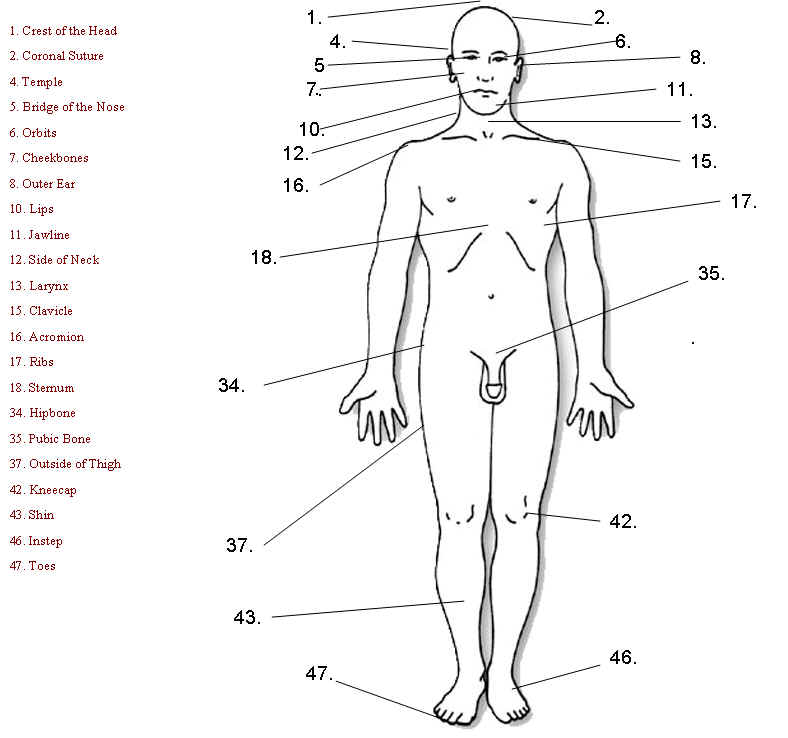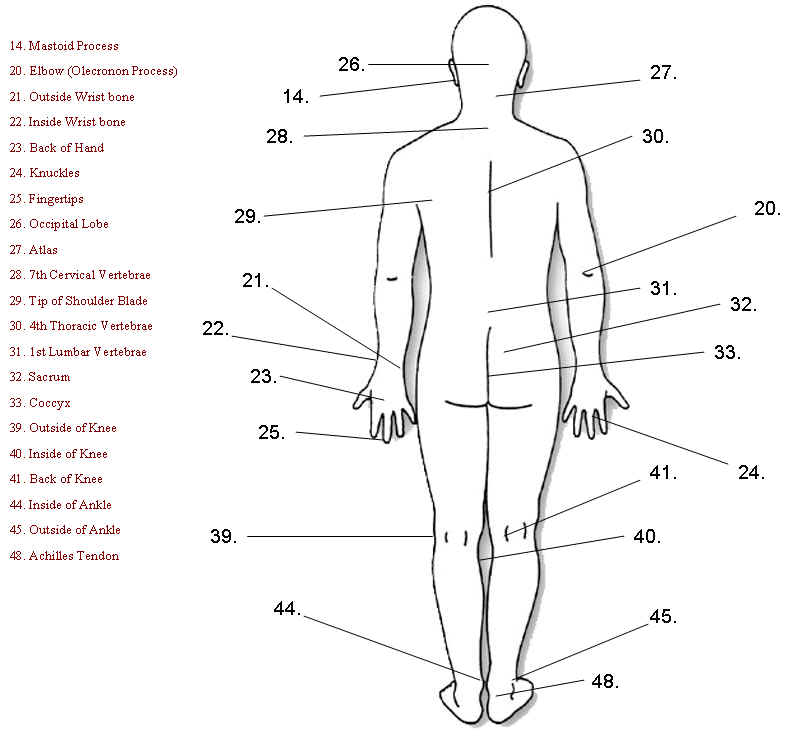
 |
Second Degree Black Belt
|
Dan Bong Bup
Strike Points Chart
Generally speaking, a "strike point" is a location where a portion of the skeletal structure, usually under a thin layer of skin, is vulnerable to impact force, and whose damage compromises the attacker's ability to further his assault. Pressure Points are usually soft locations requiring firm pressure or an intrusive technique. Strike points, by comparison, can be damaged by concussive force using a foot, hand or weapon without necessarily traveling far into the body of the target. It is very common for Pressure Points and Strike Points to often be found in close proximity to one another as in the case of the Inner (PP) and Outer (SP) Ear, or the Eyeball (PP) and the Orbit (SP) in which it is located.
Despite mythology to the contrary, the typical Korean warrior was not versed in Traditional Chinese medicine. However, the system that has given us Acupuncture and Acupressure does provide a convenient method of identifying and locating sensitive points using a universally accepted nomenclature. In addition, knowing the methods of Traditional Chinese medicine to have a long history of effective intervention with both injury and illness, understanding of the principles, though beyond the focus of this art, can only help lend greater appreciation for the contributions of the Asian cultures.
| Structure | Korean Term | TCM Location | TCM Identifier |
| 1. Crest of the Head | Governing Vessel 22 | Shinhoe (신회 ) | |
| 2. Coronal Suture | Gallbladder 16 | Mokch'ang (목창) | |
| 4. Temple | Triple Burner 22 | Hwaryo (화료) | |
| 5. Bridge of the Nose | In Dang (인 당) | ||
| 6. Orbits | Triple Burner 23 | Sajukkong (사죽공) | |
| 7. Cheekbones | Small InteStomach ine 18 | Kwallyo (관료) | |
| 8. Outer Ear | Triple Burner 19 | Noshik (노식 ) | |
| 10. Lips | Governing Vessel 27 | T'aedan (태단) | |
| 11. Jawline | Stomach 5 | Taeyŏng (대영) | |
| 12. Side of Neck | Small InteStomach ine 16 | Ch'eonch'ang (천창 ) | |
| 13. Larynx | Conception Vessel 23 | Yeomch'eon (염천) | |
| 14. Mastoid Process | Gallbladder 12 | Wan-gol (완골) | |
| 15. Clavicle | Stomach 13 | Kiho (기호 ) | |
| 16. Acromion | Small InteStomach ine 12 | Pyeongp'ung (병풍) | |
| 17. Ribs | Spleen 14 | Pokkyeol (복결 ) | |
| 18. Sternum | Conception Vessel 16 | Chungjeong (중정 ) | |
| 20. Elbow (Olecronon Process) | pahlkup | Triple Burner 10 | Ch'eonjeong (천정 ) |
| 21. Outside Wrist bone | Heart 6 | EumgEuk (음극 ) | |
| 22. Inside Wrist bone | Lung 7 | Yeolgyeo Li�quē (열결 ) | |
| 23. Back of Hand | sahn deung | � | � |
| 24. Knuckles | � | � | |
| 25. Fingertips | Sahnkeut | � | � |
| 26. Occipital Lobe | Governing Vessel 17 | Noe Ho (뇌 호) | |
| 27. Atlas | Governing Vessel 15 | Ah Mun (아 문) | |
| 28. 7th Cervical Vertebrae | Governing Vessel 14 | Taech'u (대추) | |
| 29. Tip of Shoulder Blade | � | � | |
| 30. 4th Thoracic Vertebrae | Governing Vessel 11 | Shindo (신도) | |
| 31. 1st Lumbar Vertebrae | Governing Vessel 5 | Hyeonch'u (현추 ) | |
| 32. Sacrum | Governing Vessel 3 | Yoyanggwan (요양관 ) | |
| 33. Coccyx | Governing Vessel 1 | Changang (장강) | |
| 34. Hipbone | Ung Dung I | Gallbladder 26 | Taemaek (대맥) |
| 35. Pubic Bone | Conception Vessel 2 | Kokkol (곡골 ) | |
| 37. Outside of Thigh | Gallbladder 31 | Pung Shi (풍 시) | |
| 39. Outside of Knee | Gallbladder 34 | Yangneungch'eon (양릉천 ) | |
| 40. Inside of Knee | Spleen 9 | Ŭmneungch'eon (음릉천) | |
| 41. Back of Knee | Kidney 10 | Ŭmgok (음곡 ) | |
| 42. Kneecap | � | � | |
| 43. Shin | Jung kang yi | Large Intestine 6 | Chungdo (중도) |
| 44. Inside of Ankle | Spleen 6 | Sameumgyo (삼음교) | |
| 45. Outside of Ankle | Gallbladder 39 | Hyeonjong (현종 ) | |
| 46. Instep | Bahldung | Large Intestine 3 | Samgan (삼간 ) |
| 47. Toes | Bahl-keut | � | � |
| 48. Achilles Tendon | Kidney 4 | Taejong (대종) | |

